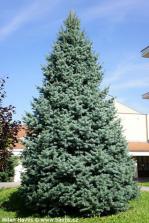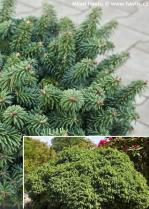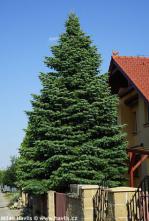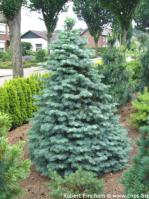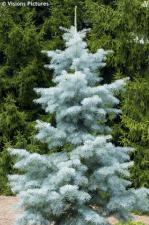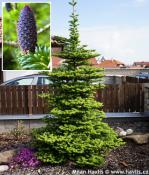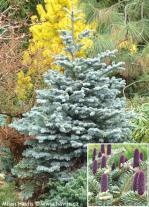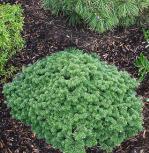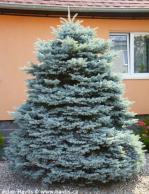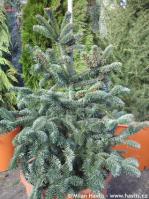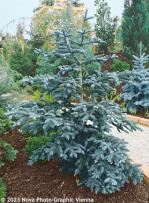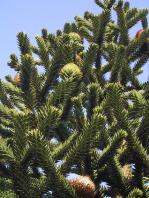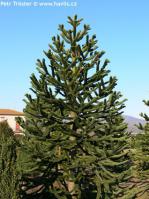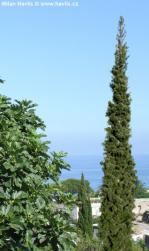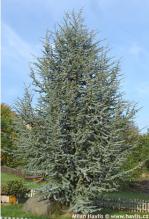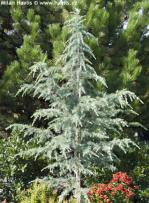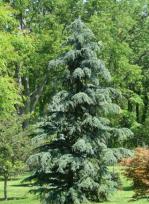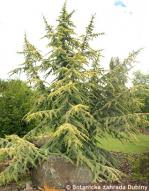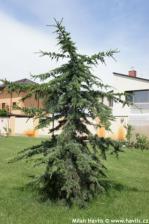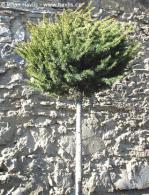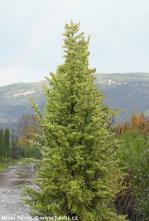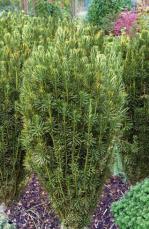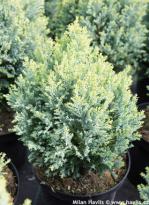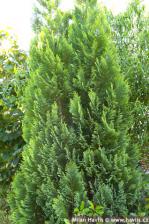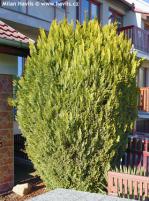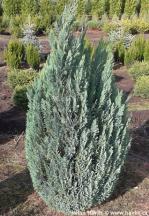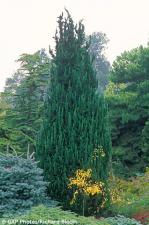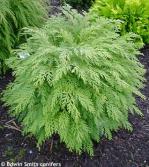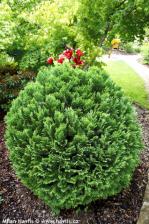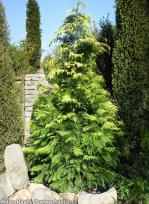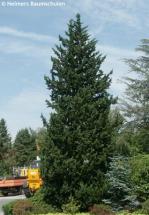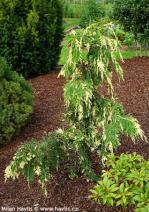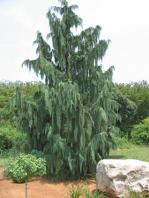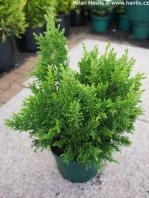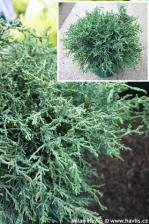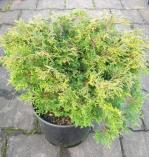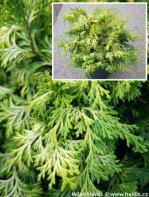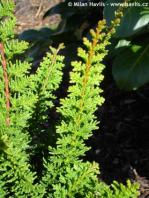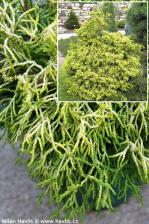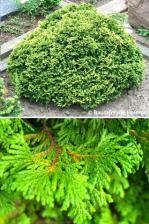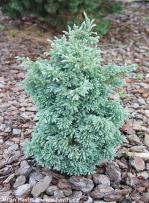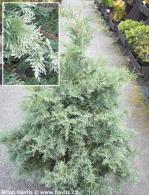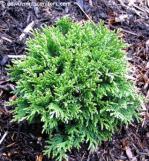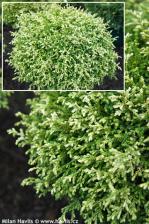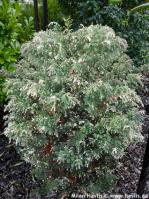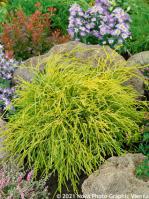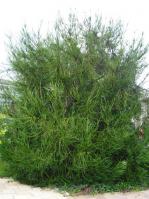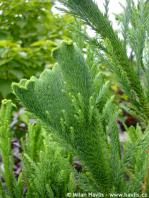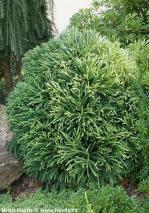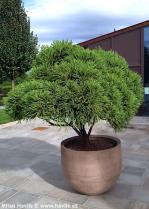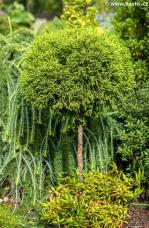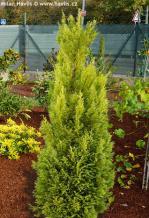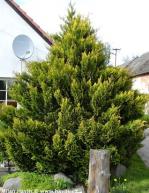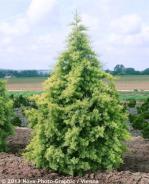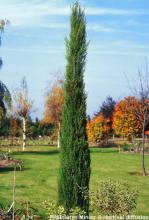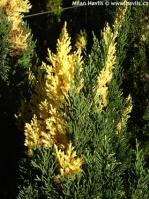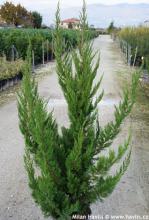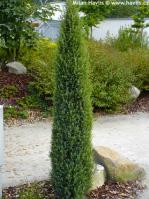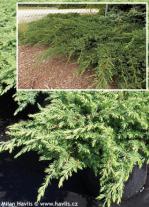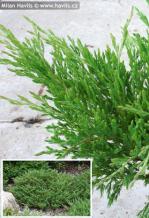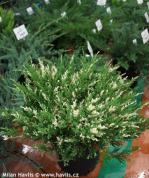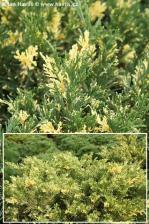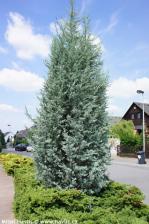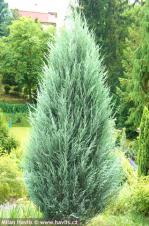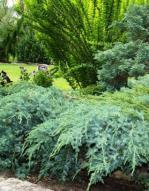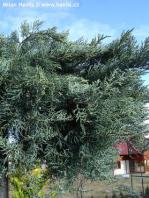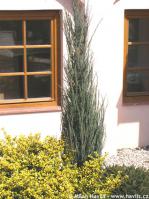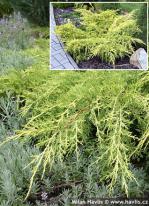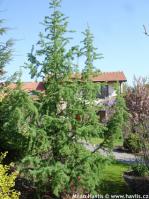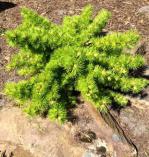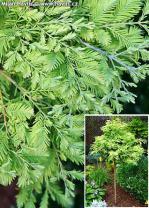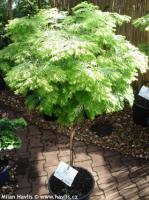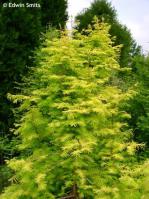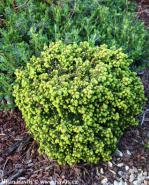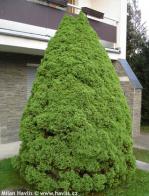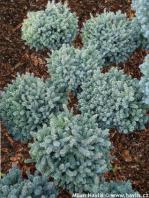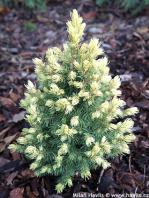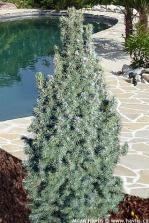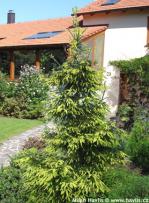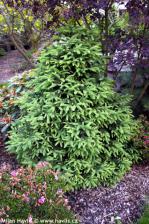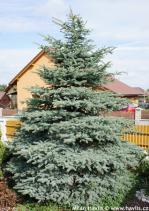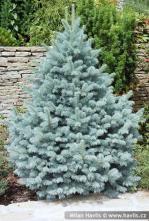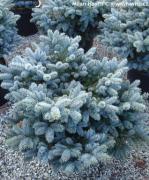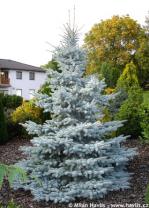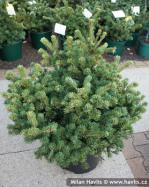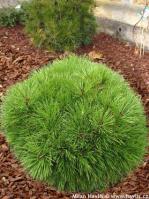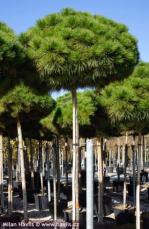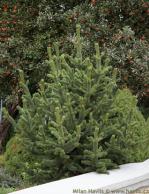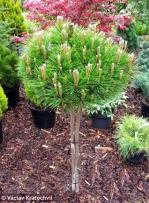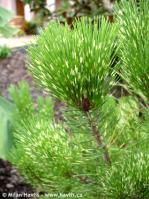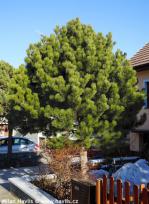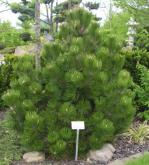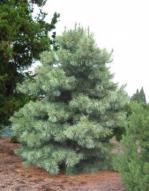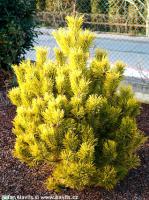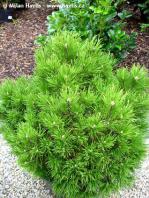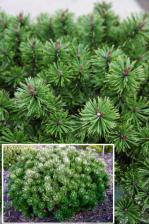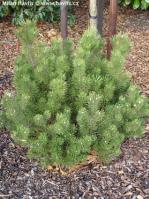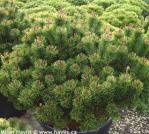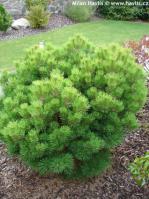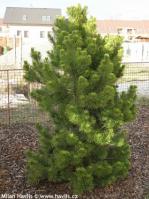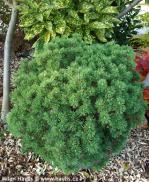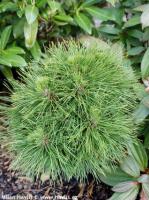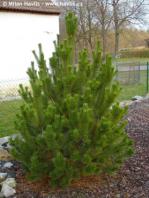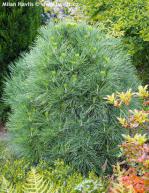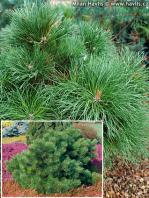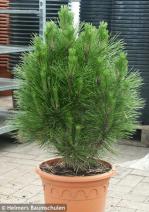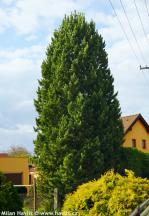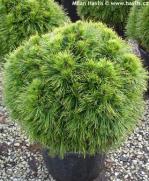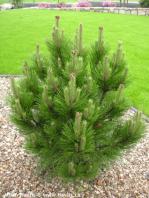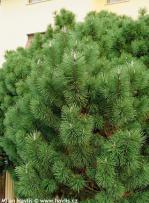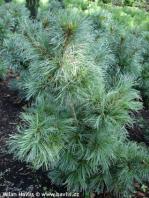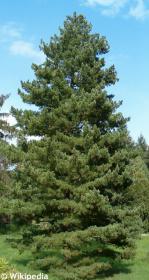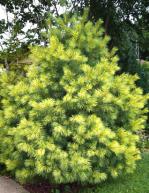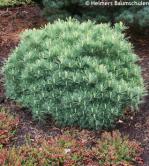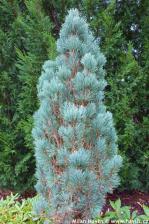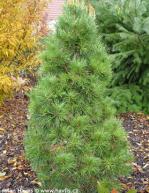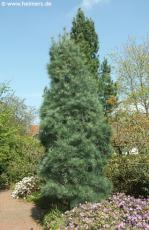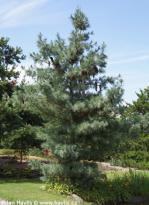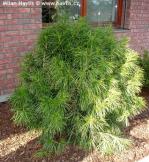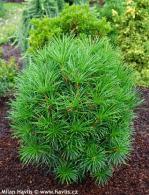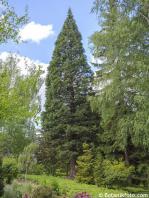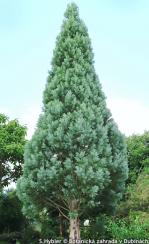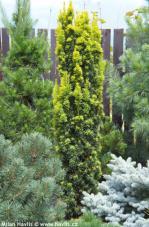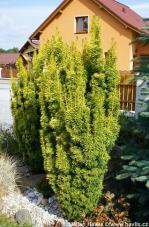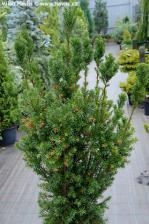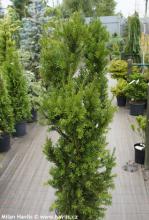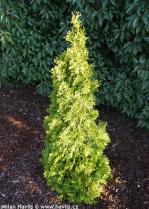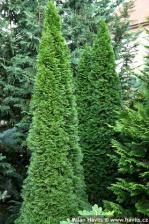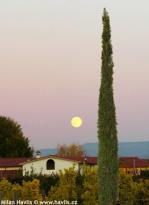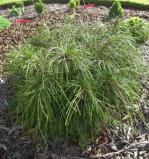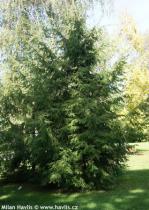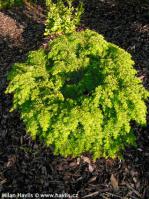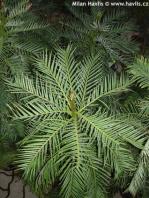Conifers
Conifers beginning with: A | C | C | G | J | L | M | P | S | T | W | complete list
CURRENTLY IN STOCK:
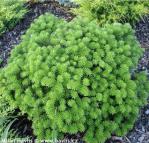 |
We always love presenting unusual and rare plants. Among those we only select the ones that are not just rare but also beautiful and can enrich your garden with a new feature. This time we have a real jewel for conifer lovers.
It is a dwarf Korean fir named “Brillant”. It is a compact ...
|
|||||||||||||
|
||||||||||||||
 | ||||||||||||||
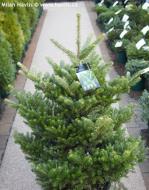 |
Molli is a dwarf variety of Korean fir from late 20th century. It is a compact, smaller version of common Korean fir with rich green, short, glossy needles with silver-grey film underneath. It grows slowly and develops a mo ...
|
|||||||||||||
|
||||||||||||||
 | ||||||||||||||
 |
Caucasian fir is perhaps the most beautiful conifer of our climate. No wonder that it is also a commercial bestseller as a Christmas tree. Its short needles densely cover the branches; they are deep green and very glossy, with silvery undersides. Fresh growths are intensely bright green.
T ...
|
|||||||||||||
|
||||||||||||||
 | ||||||||||||||
 |
Algerian fir is a beautiful conifer from North Africa (Algiers, Morocco) and is widely cultivated in South Europe (the Mediterranean). It is very tolerant to drought, heat, and poor soil but very sensitive to pollution and long-lasting frost under -23°C.
The nee ...
|
|||||||||||||
|
||||||||||||||
 | ||||||||||||||
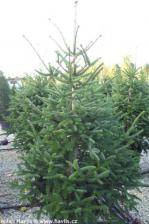 |
Spanish fir is one of the most beautiful and elegant conifers next to cedars. It comes from south of Spain and Morocco, home of its close relative Algerian fir. It is valued for its symmetrical, conical h ...
|
|||||||||||||
|
||||||||||||||
 | ||||||||||||||
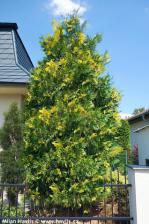 |
Although this incense cedar is one of the most sought after conifers of the south, it seems to perform much better in Czech climate thanks to cold and wet winters. It needs a lot of sun in summer though to keep its varigated leaves golden. Though, if the sun is not as hot as in the Mediterran ...
|
|||||||||||||
|
||||||||||||||
 | ||||||||||||||
 |
This variety is a weeping form of blue Atlas cedar. It has distinct silvery-blue persistent larch-like needles born in whorls of 30-45. Their striking colour makes the tree a gorgeous lawn specimen same as an ideal feature when combined with other, dark green conifers. Just remember that this ...
|
|||||||||||||
|
||||||||||||||
 | ||||||||||||||
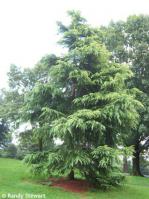 |
Deodar – Himalayan cedar is the most graceful of all cedars. It has strictly pyramidal habit when young, spreading branching and weeping ends. The needles are short, mid green, borne in whorls of 20-30. Female cones appear in summer. Older plants form unique shapes.
This is probably ...
|
|||||||||||||
|
||||||||||||||
 | ||||||||||||||
 |
Himalayan cedar is the most graceful of all cedars. Bushes Electra is a slower growing variety bred by Richard Bush in Canby, USA, at the turn of the century. It bears showy, 2-3 cm long, needles of silvery blue colour on i ...
|
|||||||||||||
|
||||||||||||||
 | ||||||||||||||
 |
Feelin‘ Blue is a striking Dutch introduction of Himalayan cedar, which in fact turned out to be one of the most reliable cedars we ever had. Formerly a ground-covering plant is often staked up to a bamboo stick in order to form an appearance of a clas ...
|
|||||||||||||
|
||||||||||||||
 | ||||||||||||||
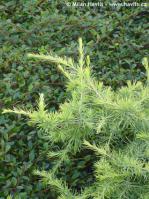 |
Golden Horizon is an interesting variety of Himalayan cedar with weeping branches. The needles are evergreen, yellow-green when young and in summer, turning blue-green as they mature and in the shade. The shape of the shrub is irregular, making horizontal branches with weeping e ...
|
|||||||||||||
|
||||||||||||||
 | ||||||||||||||
 |
Himalájský cedr is the most graceful of all cedars. Robusta Glauca is an Italian selection with long, evergreen needles. Their colour is from blue-green to almost silvery blue while new shoots are soft green.
|
|||||||||||||
|
||||||||||||||
 | ||||||||||||||
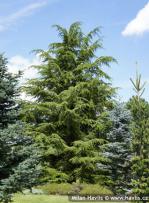 |
Cedar of Lebanon is a majestic specimen tree with needle-like dark green to blue-green foliage that looks like larch but is evergreen. Young trees are densely branched from the ground but low branches can be removed in the autumn if planted close to houses to make more room beneath. The branc ...
|
|||||||||||||
|
||||||||||||||
 | ||||||||||||||
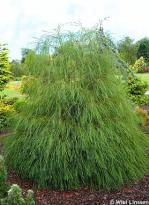 |
Drooping Solo is a Lawson cypress variety discovered by a Dutch conifer lover and horticulturist Wiel Linssen from Baexem. It was a seedling mutation of Imbricata Pendula, a similar variety of much taller but narrower habit ...
|
|||||||||||||
|
||||||||||||||
 | ||||||||||||||
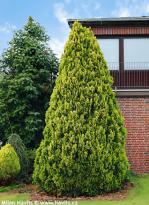 |
Ivonne (or sometimes spelled Yvonne) is a Lawson cypress variety with almost flat, soft needles of bright greeny-yellow colour from spring to summer, changing to golden-yellow in winter. It grows medium fast into a columnar shape when young, slightly ...
|
|||||||||||||
|
||||||||||||||
 | ||||||||||||||
 |
Karaca is a bright yellow coloured variety of Lawson cypress with picturesque overhanging branches that may resemble Filifera Aurea variety, except that they do not have such prominent brownish-red twigs and form longer and ...
|
|||||||||||||
|
||||||||||||||
 | ||||||||||||||
 |
Pelt's Blue, or Van Pelt's Blue is a German selection of Lawson cypress bred by Hinrich Kordes Nursery and introduced in 1984. It is an improved version of a very successful variety Columnaris (Glauca) wit ...
|
|||||||||||||
|
||||||||||||||
 | ||||||||||||||
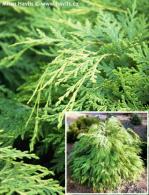 |
Sunkist is a dwarf, compact Lawson cypress, similar to Mini Globus. It is a slow growing conifer with attractive flat sprays of mid green foliage that is not pric ...
|
|||||||||||||
|
||||||||||||||
 | ||||||||||||||
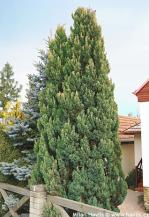 |
White Spot is a Lawson cypress variety found as a mutation of Monumentalis Nova variety in D.T.Poulsen Nursery, Denmark, in 1943. It boasts pale blue-green, scale-like needles with subtle white marbling which looks like gli ...
|
|||||||||||||
|
||||||||||||||
 | ||||||||||||||
 |
Do you know saguaro cactus? The typical succulent that gets most photographed when one wants to show a parched dessert with just one living plant. This cactus influenced the name of this Lawson cypress. It is a sport/selection of
|
||||||||||||
 | |||||||||||||
 |
Columnaris is a hugely popular variety of Lawson cypress with blue needles and compact habit. It does not grow wider than 1m which makes it ideal for hedges that are only trimmed at the top. Mature plants can reach 6-8m in many decades, they are usual ...
|
|||||||||||||
|
||||||||||||||
 | ||||||||||||||
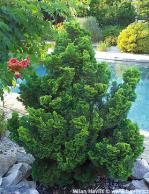 |
The Hinoki cypress is both a must-see and a must-have thereafter. Its dark green foliage is tightly congested, forming a tiny mound. It forms twisting fan-shaped branchlets in dense tiered layers.
Want to ask how fast it grows? Well it takes the same time as your partner does getting prep ...
|
|||||||||||||
|
||||||||||||||
 | ||||||||||||||
 |
Boulevard is a lovely false cypress popular for group plantings. Its needles are soft, awl-shaped, curving, silvery-blue colour. Fully mature it can grow about 3m but usually keeps smaller – 1.5m high and 1m wide. Natural habit is broadly pyramidal. Growth rate is slow to ...
|
|||||||||||||
|
||||||||||||||
 | ||||||||||||||
 |
This false cypress is belongs to the Filifera group, which means it has thread-like branches. In fact, some call these branches leaves. Practically the leaves are scales that cover the whip-like branches. Filifera Aurea is probably the most sought-after variety with golden yello ...
|
|||||||||||||
|
||||||||||||||
 | ||||||||||||||
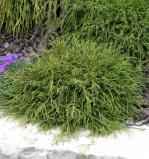 |
This false cypress is a dwarf, mound forming variety belonging to the Filifera group, which means it has thread-like branches. In fact, some call these branches leaves. Practically the leaves are scales that cover the whip-like branches. Filifera Nana is a green version, very sl ...
|
|||||||||||||
|
||||||||||||||
 | ||||||||||||||
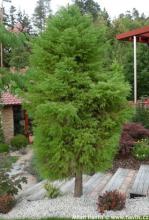 |
Japanese cedars proved to grow happily in our garden where winter temperature dropped to -27°C a couple of times. They showed no damage whatsoever and thrive. This variety has one more plus as opposed to other cryptomerias – it does not change its colour to coppery brown in winter and r ...
|
|||||||||||||
|
||||||||||||||
 | ||||||||||||||
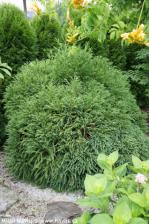 |
One of the most beautiful conifers of our climate is Japanese cedar. There are many species and varieties. Globosa Nana was first discovered in 1923 in Japan, where it is called Mitama-sugi.
It is a dense, compact conifer with rounded branches. The needles are curved, inward- ...
|
|||||||||||||
|
||||||||||||||
 | ||||||||||||||
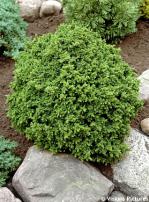 |
Vilmoriniana is a dwarf variety of Japanese cedar imported from Japan and introduced around 1890 by French botanist and horticulturist Auguste Louis Maurice Lévêque de Vilmorin (1849-1918). At least 20 different plant ...
|
|||||||||||||
|
||||||||||||||
 | ||||||||||||||
 |
Sekkan is a gorgeous evergreen conifer not only for Japanese gardens. It forms a fat, cone-shaped shrub or small tree with bright, sulphur-yellow or creamy-yellow new growths. They remain yellow throughout the year until next spring when they turn deep green and are replaced by new fol ...
|
|||||||||||||
|
||||||||||||||
 | ||||||||||||||
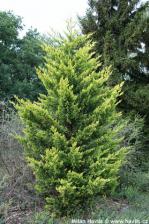 |
Gold Rider is still quite new in the Leyland cypress family. It produces flattened sprays of bright yellow-green, scale-like leaves. The branches are not pendent, not erect. Something in between and that makes it stand apar ...
|
|||||||||||||
|
||||||||||||||
 | ||||||||||||||
 |
Atro is one of those smaller, compact varieties of Leyland cypress which can be grown even in a small garden. It was found as a natural mutation in Van den Dool Cultures Nursery in Dutch town Boskoop in 1983. You can also f ...
|
|||||||||||||
|
||||||||||||||
 | ||||||||||||||
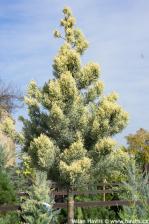 |
Smooth cypress comes from SW of the USA and is probably the only true cypress that can stand winters down to zone 6. Fastigiata varieties are of columnar habit and are a sought after plant for both exotic types of gardens as well as typical Central-European landscapes where it will cre ...
|
|||||||||||||
|
||||||||||||||
 | ||||||||||||||
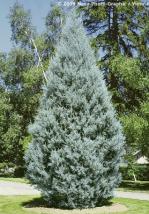 |
Smooth cypress is an extraordinary conifer whose steel-blue needles will leave no doubt that this one is really something.
The species of this cypress comes from SW of the USA, while Fastigiata variety was selected in Italy. It has distinctly silvery-blue to glaucous colour o ...
|
|||||||||||||
|
||||||||||||||
 | ||||||||||||||
 |
Maidenhair tree is probably one of the oldest species on Earth. It was here some 180 million years ago … obviously it was the time when the Dead Sea was still ill. Its extreme tolerance of various conditions made it survive to our time. One tree can live as long as 2000 years.
It bel ...
|
|||||||||||||
|
||||||||||||||
 | ||||||||||||||
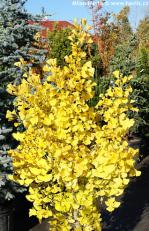 |
Eiffel is an attractive maidenhair tree variety from the beginning of the new millennium. It makes compact, more densely branched trees or multistemmed shrubs with deciduous, 4-7 cm wide, fan-shaped, divided, mid green leav ...
|
|||||||||||||
|
||||||||||||||
 | ||||||||||||||
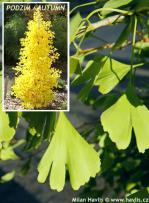 |
Fastigiata Blagon is a French variety of maidenhair tree with narrowly conical or almost columnar growth. It bears deciduous, 4-7 cm wide, fan-shaped, divided, mid green leaves (botanically classified as needles), that chan ...
|
|||||||||||||
|
||||||||||||||
 | ||||||||||||||
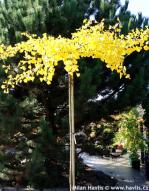 |
Horizontalis is a small variety of maidenhair tree with almost flat canopy with deciduous, 4-7 cm wide, fan-shaped, divided, mid green leaves (botanically classified as needles), that change to fantastic shade of bright gol ...
|
|||||||||||||
|
||||||||||||||
 | ||||||||||||||
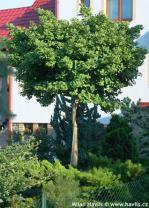 |
Mariken is a new variety from 1999. It is a dwarf form with short branches, densely covered with foliage. It is usually available as a small shrub suitable for rockeries, or a half-standard for gardens with less space, or a standard tree. Thanks to its dense growth and attractive folia ...
|
|||||||||||||
|
||||||||||||||
 | ||||||||||||||
 |
Not everyone can afford growing a large tree in his garden but would like to enjoy its foliage. Dwarf varieties are perfect solutions to this problem. And Troll is one of the most recent solutions among them. This German word means hobbit and hobbits, as we know them, are usually small ...
|
|||||||||||||
|
||||||||||||||
 | ||||||||||||||
 |
Spartan is a hard-to-believe variety of juniper. Precisely a Chinese juniper. What makes it so incredible? Both its colour and habit are unique and so not juniper. Fresh, emerald green shade of scale-like leaves (needles), ...
|
|||||||||||||
|
||||||||||||||
 | ||||||||||||||
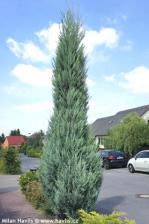 |
Blue Arrow juniper is as thin as a supermodel. This conifer has a truly slim, columnar habit and attractive blue-green to almost silvery blue colour. It is often compared to another juniper variety called Skyrocket against ...
|
|||||||||||||
|
||||||||||||||
 | ||||||||||||||
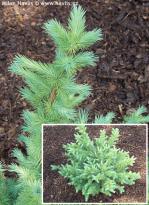 |
Grey Pearl is a picturesque dwarf variety of Japanese larch. It is a low growing shrub with soft, deciduous needles that emerge fresh green and soon turn silvery blue green. It makes a fluffy appearance and is almost irresi ...
|
|||||||||||||
|
||||||||||||||
 | ||||||||||||||
 |
There’s a horticultural legend from mid-1940’s which goes something like this: For centuries, metasequoia had been believed to be extinct in the wild and buried only in fossils just like trilobites. It wasn't until 1941 that a live specimen was found in ...
|
|||||||||||||
|
||||||||||||||
 | ||||||||||||||
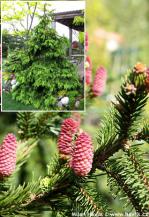 |
Acrocona is a beauty among Norway spruces. It is a smaller variety with picturesque cones at the tips of the branches. They are small, rich raspberry red and appear from May. Later they turn brown as they mature.
Needle ...
|
|||||||||||||
|
||||||||||||||
 | ||||||||||||||
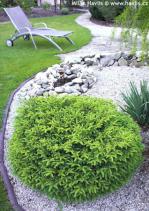 |
Dwarf conifers are very popular in continental Europe, mostly thanks to its evergreen feature and good hardiness. Their sizes never grow over the top which makes them ideal for small-sized gardens and rock gardens, they look good as solitaires as well as in groupings. This bird’s nest spruce h ...
|
|||||||||||||
|
||||||||||||||
 | ||||||||||||||
 |
Another lovely piece for miniature lovers is this dwarf spruce. It grows slowly, compact and dense to it mature height of 3m only after a few decades.
Needles are short and stiff, rich green. New branches show bright orangey-brown bark and are short. No pruning needed for dense growth. The ...
|
|||||||||||||
|
||||||||||||||
 | ||||||||||||||
 |
Brewer spruce is an evergreen conifer native to the Siskiyou Mountains of southwestern Oregon and northern California where it is a rare plant owing to its sparse occurrence. It has a beautiful shape. The stem and inner branches are firm and upright whereas new bra ...
|
|||||||||||||
|
||||||||||||||
 | ||||||||||||||
 |
J.W. Daisy’s White is another dwarf variety of cone-shaped white spruce found by Canadian breeder J.W. Daisy from Edmonton, Alberta. He was one of the pioneers of the twentieth century in the breeding of conifers, esp ...
|
|||||||||||||
|
||||||||||||||
 | ||||||||||||||
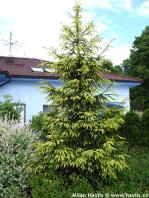 |
Caucasian spruce is an attractive conifer with an interesting habit. Lateral branches grow horizontally first, later they rise a bit upwards in an angle of about 45° while new growths are slightly drooping. Aureospicata is a variety with bright yellow new foliage that lasts for ...
|
|||||||||||||
|
||||||||||||||
 | ||||||||||||||
 |
Blue Diamond is a true jewel. This conifer is a variety of Colorado spruce with intensely blue coloured needles with silver overlay. They are quite prickly and evergreen. It grows about 15 cm per year, and only 10 cm upward ...
|
|||||||||||||
|
||||||||||||||
 | ||||||||||||||
 |
BAMBINO® is another beautiful dwarf hybrid pine, following success of its forerunners Marie Brégeon and
|
||||||||||||
 | |||||||||||||
 |
Swiss stone pine is a beautiful one with dark green needles with a silvery stripe. So its overall appearance may seem a little turquoise. It grows slowly, forming a dense conifer with rather irregular growth when young and more or less pyramidal with age.
Owing to its slow growth rate, si ...
|
|||||||||||||
|
||||||||||||||
 | ||||||||||||||
 |
Compacta Glauca is an arolla pine variety of reduced size. It was selected by C.Frets & Son nursery in Boskoop, the Netherlands, around 1930, in a field of older variety called Glauca which had been known since 1860' ...
|
|||||||||||||
|
||||||||||||||
 | ||||||||||||||
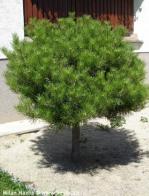 |
If you like Mediterranean umbrella pines but feel sorry that it is too tender for our climate try to have a look at this selection of dwarf Japanese red pine. It is called Alice Verkade and has bright green, soft needles. It is a slow growing plant making only about 7-10 cm per ...
|
|||||||||||||
|
||||||||||||||
 | ||||||||||||||
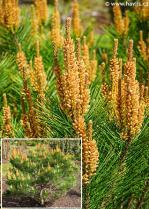 |
Tanyosho pine with its umbrella-like, mushroom crown is sometimes used as a hardy substitute for Mediterranean pine. It grows much smaller and more slowly – to make a specimen tree of 3-4 metres it needs some 30 years. Needles are long, bright green, soft. Bark is orange to red hence its culti ...
|
|||||||||||||
|
||||||||||||||
 | ||||||||||||||
 |
Rocky Mountains white pine is a North American pine species whose origin ranges through the Rocky Mountains of Alberta in Canada down to Colorado, USA. It has distinctively flexible young twigs and soft, blue-green to silvery-blue needles. Female cones are yellow-b ...
|
|||||||||||||
|
||||||||||||||
 | ||||||||||||||
 |
Pine trees are superb trees which grow in a wide climate scale - from cold northern countries to hot coastal sites. They are probably most beautiful in their natural environment.
Satellit is a narrowly columnar variety ...
|
|||||||||||||
|
||||||||||||||
 | ||||||||||||||
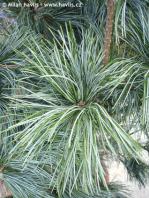 |
Ammerland is a very decorative, medium-sized western pine. These pines come from western parts of North America but this variety was bred in German Jeddeloh.
Its needles are borne in whorls of 5. They are mostly erect, stiff, blue-green, long. The shape of this pine is rathe ...
|
|||||||||||||
|
||||||||||||||
 | ||||||||||||||
 |
One of the best known pines is this dwarf mountain pine which occurs naturally in mountainous regions. It often has bizarre shapes owing to constant winds blowing from one side. In gardens it forms a dense and rich shrub. It is soil tolerant but will be poor in calcareous soil. As all other pines it ...
|
|||||||||||||
|
||||||||||||||
 | ||||||||||||||
 |
Carsten’s Wintergold is a selection of very popular Wintergold with stunning winter colour. The needles are deep green from mid spring until early autumn. Then they begin turning yellow and from end autumn until the last cold days of spring they are vivid yellow. This colour is u ...
|
|||||||||||||
|
||||||||||||||
 | ||||||||||||||
 |
Columbo is a mountain pine that has absolutely nothing to do with inspector Colombo. Its original name given in 1984 was Columnaris and it perfectly described its columnar habit. It grows slowly and dense, bears shor ...
|
|||||||||||||
|
||||||||||||||
 | ||||||||||||||
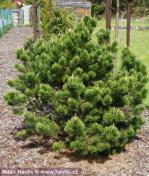 |
Would you like a gnom for your garden? Not the one from plaster, a living one – a dwarf pine called the same name = Gnom. This one is very beautiful, slow and dense growing with short to medium sized, dark green needl ...
|
|||||||||||||
|
||||||||||||||
 | ||||||||||||||
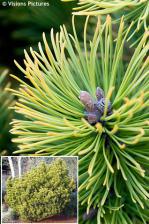 |
Ophir is a dwarf mountain pine with yellow needle tips from mid autumn until mid spring. They are evergreen, up to 7 cm long, and glossy. In late spring they change back to typical pine green colour. It naturally forms low, ...
|
|||||||||||||
|
||||||||||||||
 | ||||||||||||||
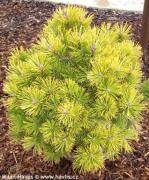 |
Winter Gold is an excellent variety of dwarf mountain pine that has all positives of the species and on top of that brings golden yellow needle colour in winter and early spring. The colder it gets the more yellow it turns. ...
|
|||||||||||||
|
||||||||||||||
 | ||||||||||||||
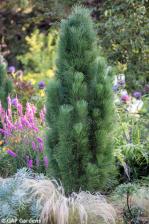 |
Green Tower is a fastigiate and dwarf variety of Austrian pine. It was found as a seedling, possibly of Pyramidalis variety, by Martin Zimmer in late 1990's. It has about 10 cm, stiff, dark green needles borne in whorls of ...
|
|||||||||||||
|
||||||||||||||
 | ||||||||||||||
 |
After a huge success with BREPO® variety, a breeder of pines from Switzerland Henri Bregeon comes up with another dwarf pine variety, this time called Marie Bregeon
|
|||||||||||||
|
||||||||||||||
 | ||||||||||||||
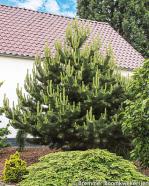 |
Oregon Green is a very beautiful addition to the family of small to mid-sized pine trees. It was found as a seedling by Morris Van Meter in his nursery in Boring, Oregon, USA, in early 1990's. It is easily distinguished by ...
|
|||||||||||||
|
||||||||||||||
 | ||||||||||||||
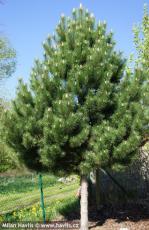 |
Austrian (black) pine was first classified by Austrian botanist Johann Arnold in 1785. It is a hardy tree which escaped Austria in early 20th century, and can now be found all around Europe, down to Turkey, and in North Africa. Hard to say if Mother Nature needed a ...
|
|||||||||||||
|
||||||||||||||
 | ||||||||||||||
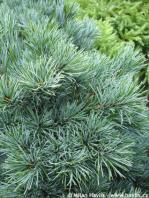 |
You needn’t be a specialist to fall in love with this Japanese white pine at the first sight; this is probably one of the top ones mostly sought after by bonsai-makers, though. Needles of Negishi are 5-6 cm long, dark green with silvery grey film which gives it a unique, a ...
|
|||||||||||||
|
||||||||||||||
 | ||||||||||||||
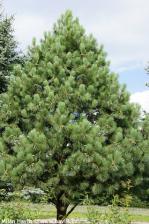 |
One of the tallest pines is this eastern white pine. It has soft, 7-13 cm long needles of light green colour with a bluish tint. Natural growth is upright with pyramidal shape when young, turning slightly wider and irregular as the branches spread to sides and mature. In gardens where it has limited ...
|
|||||||||||||
|
||||||||||||||
 | ||||||||||||||
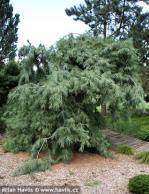 |
White (Weymouth) pines are very popular for their soft needles which you want to touch over and over again. They are usually long, silvery blue-green and come in whorls of 5. Pendula is a picturesque variety with arcing bra ...
|
|||||||||||||
|
||||||||||||||
 | ||||||||||||||
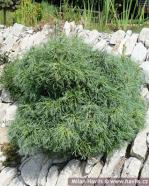 |
Tiny Curls is a picturesque selection of white pine with twisted needles and straight trunk and branches. The needles are mid green with a silver stripe. It is very similar to another variety with twisted needles called Torulosa but Tiny Curls show much more symmetrical growth, ...
|
|||||||||||||
|
||||||||||||||
 | ||||||||||||||
 |
If you like pines with soft needles, white pines are the best choice. Radiata is an old variety from 1923 which is a slow grower with silvery blue-green needles decorated with green underneath. The appearance is fluffy and ...
|
|||||||||||||
|
||||||||||||||
 | ||||||||||||||
 |
Scots pine is a European native pine species, and is native in our country, too. Its makes the most beautiful and at the same time the most bizarre specimens in the wild. It bears 5-7 cm long, mid green needles with a slight bluish overlay. They are borne in pairs and remain on the tree for 3 ...
|
|||||||||||||
|
||||||||||||||
 | ||||||||||||||
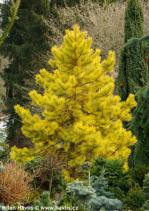 |
Scots pine is a European native pine species, and is native in country, too. The green species makes the most beautiful and at the same time the most bizarre specimens in the wild. Aurea is a variety known already since the ...
|
|||||||||||||
|
||||||||||||||
 | ||||||||||||||
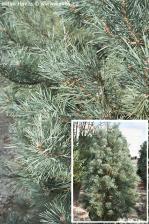 |
Scots pine is a European native pine species, and is native in our country, too. Its makes the most beautiful and at the same time the most bizarre specimens in the wild. Glauca is a selected variety with blue green needles ...
|
|||||||||||||
|
||||||||||||||
 | ||||||||||||||
 |
Moseri is a dwarf variety of Scots Pine from Moser Nursery in Versailles, France, from 1900. It has long, slightly twisted needles of soft green colour in summer and rich golden yellow in winter. It grows very slowly (8-12 ...
|
|||||||||||||
|
||||||||||||||
 | ||||||||||||||
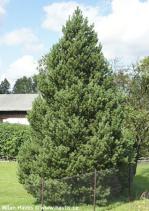 |
Uncinata is a subspecies of mountain pine. Its main difference from dwarf mountain pine is a central leader which helps it make a tree character. Also, this pine is much taller in full maturity as opposed to common mountain pine, forming a widely pyramidal habit, slightly irregu ...
|
|||||||||||||
|
||||||||||||||
 | ||||||||||||||
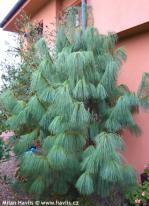 |
Himalayan pine is often the dream of most pine growers but due to its large size in maturity only a few dare to grow it in their gardens. Nevertheless, if you have room and love pine trees, this majestic piece is worth a good landscape plan, perhaps even if you eve ...
|
|||||||||||||
|
||||||||||||||
 | ||||||||||||||
 |
Wiethorst is a witch’s broom of Schwerin’s pine, found and named by Johann Wieting in Gieelhorst, Germany. It is dwarf, slow growing version of this pine with symmetrical, pyramidal shape and dense habit. It has ...
|
|||||||||||||
|
||||||||||||||
 | ||||||||||||||
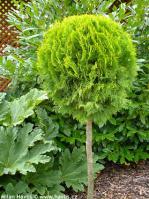 |
Aurea Nana is a dwarf conifer with golden-yellow, scale-like leaves. It belongs to cypress family and is known under its other name – oriental thuja. It grows slowly, keeps it compact shape and dense habit and is suit ...
|
|||||||||||||
|
||||||||||||||
 | ||||||||||||||
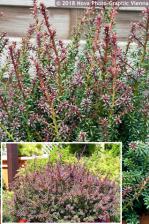 |
Red Tip is a valued podocarp variety with dark green, glossy needles which emerge deep burgundy red in spring. They are evergreen and only 1-2 cm long. The plant is mound-forming and quite compact yet we recommend midsummer ...
|
|||||||||||||
|
||||||||||||||
 | ||||||||||||||
 |
Pseudolarix is a genus of one species only pseudolarix amabilis - golden larch, formerly also called p. kaempferi after the German naturalist, physician, and botanist Engelbert Kaempfer (1651-1716). He was a man of many interests, all of which led to Asia (history, ...
|
|||||||||||||
|
||||||||||||||
 | ||||||||||||||
 |
Japanese umbrella pine is an exquisite-looking conifer with dark green needles. They are glossy, 5-12 cm long and grow in whorls of 15-20. They are borne at the shoot-tips like the spokes of an umbrella, hence it name.
In Japan it grows some 10m tall, however, in our climate you can count ...
|
|||||||||||||
|
||||||||||||||
 | ||||||||||||||
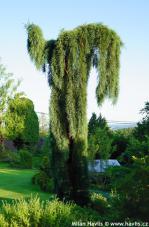 |
Pendulum giant redwood is a true jewel in conifer collectors’ gardens. This picturesque version of originally the largest tree in the world is much smaller and usually extremely slender. It was found as a seedling sel ...
|
|||||||||||||
|
||||||||||||||
 | ||||||||||||||
 |
Cascade Falls is an exciting new variety of bald cypress. It is a novelty from New Zealand, patented in the USA under PP12,296 in 1999. Its eye-catching feature are its pendent branches forming several cascades from the top of the graft. It is a deciduous conifer with bright green, lin ...
|
|||||||||||||
|
||||||||||||||
 | ||||||||||||||
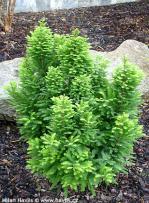 |
Peve Minaret is the one bald cypress perfect for the smallest of gardens. This dwarf plant is a conifer with linear, bright green, deciduous leaves. The branchlets grow only a few centimetres per year forming a neat and beautiful shrub. Though it loves plenty of water you can us ...
|
|||||||||||||
|
||||||||||||||
 | ||||||||||||||
 |
David is a columnar variety of common yew with golden needles introduced in 1987. It grows slowly into a dense shrub with strictly upright, congested branches forming relatively slender features with a slightly open top. Ne ...
|
|||||||||||||
|
||||||||||||||
 | ||||||||||||||
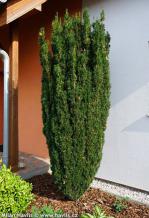 |
Irish yew is a popular evergreen conifer. They are very practical due to many varieties available offering various shapes and sizes. Another advantage is that they grow well in both full sun and in deep shade.
Fastigiata has strictly upright, narrow habit. It grows very slowl ...
|
|||||||||||||
|
||||||||||||||
 | ||||||||||||||
 |
Golden Tuffet is a gorgeous variety of white cedar (arborvitae). It is a cushion-forming, small, slow growing conifer with golden-orange leaves on top of the shrub, and bright green at the bottom. In winter it gains reddish ...
|
|||||||||||||
|
||||||||||||||
 | ||||||||||||||
 |
Mr.Bowling Ball is a funny name for a unique arborvitae variety. It is a dwarf, cushion-forming, evergreen conifer with medium green, thread-like, lacy foliage. In winter it gains reddish-purple shade on insolated parts.
...
|
|||||||||||||
|
||||||||||||||
 | ||||||||||||||
 |
Teddy is a beautiful addition to the arborvitae family. It is a dwarf variety with emerald green foliage that is so nice to touch. Its vibrant green colour changes to bronze in winter and comes back in spring. It grows slow ...
|
|||||||||||||
|
||||||||||||||
 | ||||||||||||||
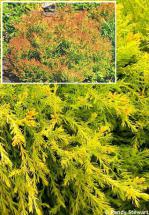 |
When around 1900 an arborvitae variety Rheingold with its fiery orange autumn and winter colour was discovered, it became a sensation which everyone wanted. Almost exactly one hundred years later one of those plants produced a mutation with distinctly different col ...
|
|||||||||||||
|
||||||||||||||
 | ||||||||||||||




